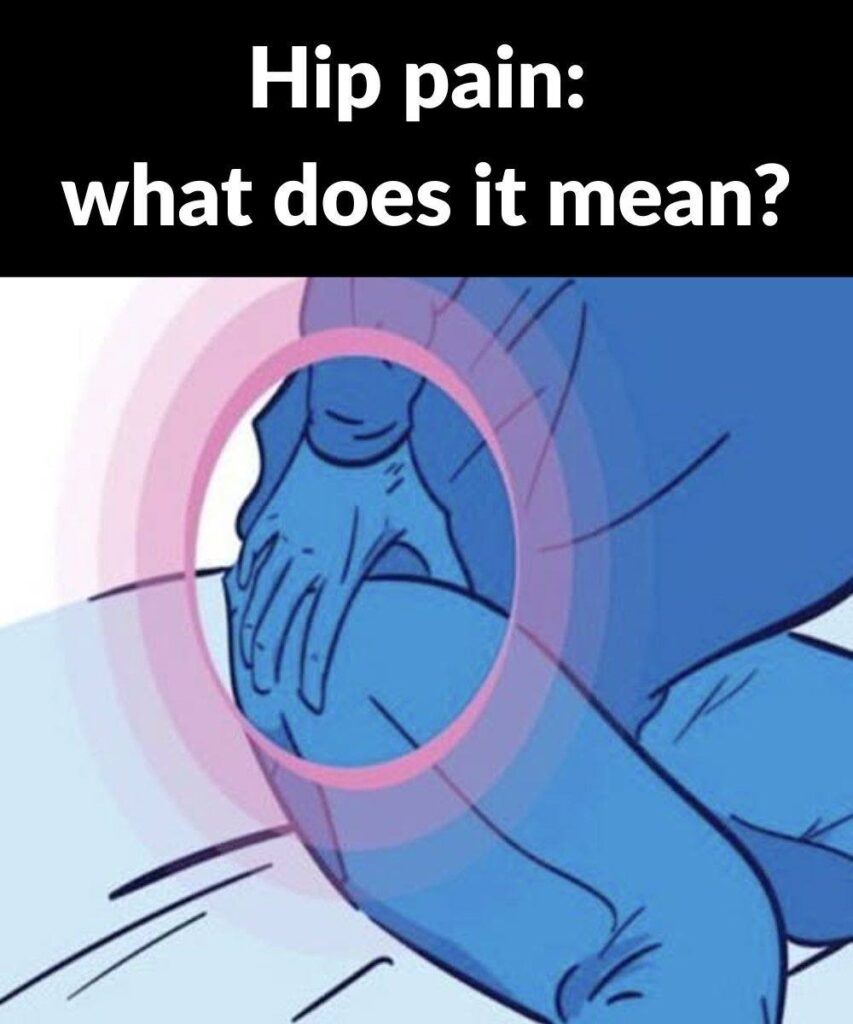
Do you wince when you bend down to tie your shoes?
Does climbing stairs now feel more like a workout than a simple movement?
Is morning stiffness around your hip area becoming a daily ritual before your coffee even kicks in?
If so, you’re not alone.
Hip pain isn’t just an issue for seniors anymore. More and more active adults between the ages of 35–60 are noticing early signs of hip wear and tear , often mistaking it for back pain, sciatica, or just “getting older.”
But what if that discomfort was actually your body sending you a message — one worth paying attention to?
Let’s explore the most common causes of hip pain , how to tell if it’s something serious, and what you can do about it — both at home and with professional help.
Why More Active Adults Are Feeling Hip Pain
Contrary to popular belief, hip pain doesn’t only affect the elderly. In fact, many people in their 30s, 40s, and 50s are starting to experience joint discomfort earlier than expected .
Why?
Here are some reasons:
Years of high-impact exercise (running, HIIT, CrossFit)
Prolonged sitting at work or home
Muscle imbalances from uneven training routines
Early arthritis development
Tight hip flexors or poor posture
The good news? Understanding what’s going on gives you the power to slow or even reverse the damage — without giving up your active lifestyle.
Common Causes of Hip Pain in Adults Over 35
1. Osteoarthritis – The Silent Joint Wearer
Osteoarthritis is the most common cause of hip pain as we age. It results from the breakdown of cartilage in the joint, leading to bone-on-bone friction and inflammation.
Symptoms: Stiffness, grinding sound, reduced range of motion, pain after sitting or activity.
2. Hip Bursitis – Inflammation You Can Feel
Bursitis occurs when the small fluid-filled sacs (bursae) near your hip joint become inflamed — often due to overuse or repetitive motion.
Symptoms: Sharp pain on the outer side of the hip, worse when lying on the affected side.
3. Hip Labral Tear – Often Missed, But Real
The labrum is a ring of cartilage that cushions your hip joint. A tear can result from sports, repetitive movements, or structural issues.
Symptoms: Clicking or catching sensation in the hip, deep groin pain, sharp pain during rotation or squatting.
4. Tight Hip Flexors – Sitting Disease
Spending long hours seated can lead to tight hip flexors and lower back pain — which may feel like it’s coming from the hip itself.
Symptoms: Tightness in front of the hip, discomfort when standing up after sitting
5. Greater Trochanteric Pain Syndrome (GTPS) – A Frequent Culprit
A broad term that includes bursitis and tendinitis, GTPS causes lateral hip pain — especially in women and middle-aged runners.
Symptoms: Pain while walking, sleeping on your side, or standing too long.
When Should You See a Doctor?
While some hip discomfort can be managed at home, there are red flags that mean it’s time to seek professional help.
⚠️ Signs to Watch For:
Persistent pain that interferes with sleep or daily life
Difficulty walking or bearing weight
Swelling, warmth, or redness around the hip
Sudden onset after injury (fall, sports impact)
Pain that radiates down the leg (could signal nerve involvement)
Limping or reduced range of motion
Ignoring these symptoms can lead to worsening pain, reduced mobility, or chronic conditions later on.
Natural Ways to Ease Hip Pain at Home
If your hip pain is mild to moderate and not caused by trauma, here are proven ways to manage it without immediate medical intervention.
✅ Try These:
Stretch regularly : Focus on hip flexors, glutes, and hamstrings.
Apply heat or ice : Ice helps reduce inflammation; heat promotes circulation.
Low-impact exercise : Swimming, cycling, or yoga can keep joints mobile without strain.
Use a foam roller : Helps release tension in surrounding muscles.
Weight management : Even a small reduction can take pressure off the hips.
Anti-inflammatory foods : Turmeric, omega-3s, leafy greens, and berries support joint health.
Over-the-counter pain relief : Ibuprofen or acetaminophen can offer short-term relief.
Frequently Asked Questions (FAQs)
Q: Can hip pain go away on its own?
A: Mild cases often improve with rest and stretching, but persistent pain should be evaluated.
Q: Is walking good for hip pain?
A: Yes — gentle walking helps maintain mobility, but avoid high-impact activities.
Q: What is the best sleeping position for hip pain?
A: Sleeping on your back or the non-painful side with a pillow between your legs can help.
Q: Does sitting make hip pain worse?
A: Yes — prolonged sitting tightens hip flexors and increases pressure on the joint.
Q: Can I prevent hip pain as I age?
A: Absolutely! Strengthening core and hip muscles, staying flexible, and maintaining a healthy weight all help.
Final Thoughts
Hip pain might start subtly — a twinge when you stand up, a dull ache after a long day — but left unchecked, it can turn into a major quality-of-life issue .
The key is understanding what your body is telling you — and taking action early.
Whether it’s through stretching, strength training, or seeing a physical therapist , addressing hip pain now can keep you moving well into your 70s and beyond.
So don’t ignore that stiffness, that occasional click, or that annoying ache when you rise from your desk.
Your hips have been working hard for years — now it’s time to return the favor.